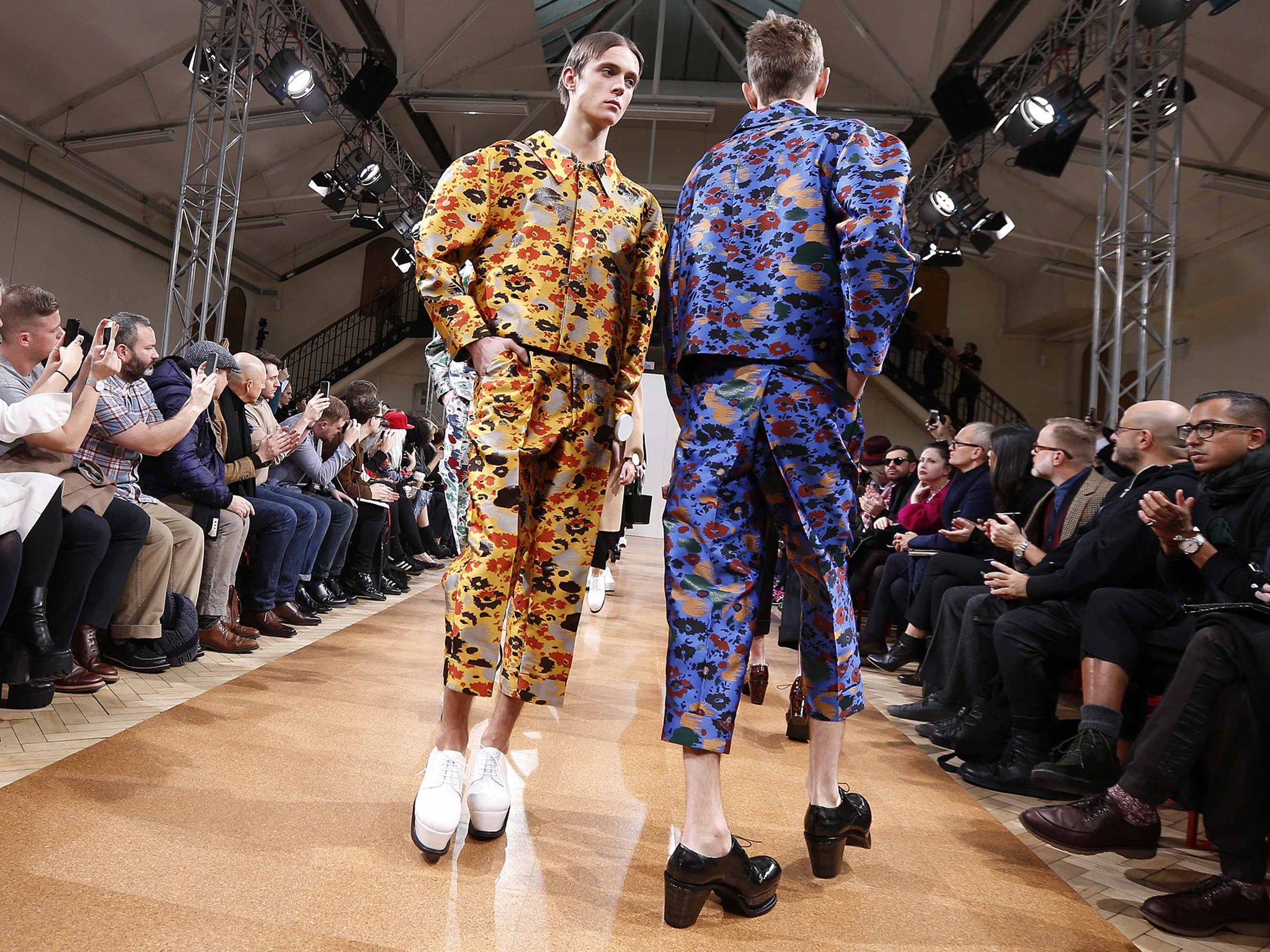London Collections: Men: Sarah Burton's Alexander McQueen collection takes inspiration from street photography and JW Anderson's heels clog up catwalk
Show summoned some of the menace synonymous with founder's name

Your support helps us to tell the story
From reproductive rights to climate change to Big Tech, The Independent is on the ground when the story is developing. Whether it's investigating the financials of Elon Musk's pro-Trump PAC or producing our latest documentary, 'The A Word', which shines a light on the American women fighting for reproductive rights, we know how important it is to parse out the facts from the messaging.
At such a critical moment in US history, we need reporters on the ground. Your donation allows us to keep sending journalists to speak to both sides of the story.
The Independent is trusted by Americans across the entire political spectrum. And unlike many other quality news outlets, we choose not to lock Americans out of our reporting and analysis with paywalls. We believe quality journalism should be available to everyone, paid for by those who can afford it.
Your support makes all the difference.A Maverick Eye. That’s the title of a tome chronicling the street photography of John Deakin, an inspiration for Sarah Burton’s autumn/winter 2014 Alexander McQueen menswear collection.
The truly maverick eyes of London Collections: Men this season belong to three designers: Craig Green, whose MAN show on Monday was a highlight; the young Irish designer seen as London fashion’s next big brand in the making, JW Anderson; and Sarah Burton. Over the past 48 hours they are the mavericks who have elicited applause, annoyance and much heated debate.
Burton is the most established: the McQueen label has just turned 20, and its namesake founder’s aesthetic found fertile ground in both men’s and womenswear. Burton staged her show in a disused church, summoning some of the menace synonymous with McQueen’s name. Bauhaus boomed about Bela Lugosi on the soundtrack and her models flocked out frocked-up as Frankensteins, complete with lug-soled platform boots. Despite patchworks in gold lamé and lavish embroideries, the results never felt overly rich, or complicated, even when Deakin’s imagery was digitally printed and woven into tailoring.
Oddly, Burton’s hyped-up crepe soles found a reflection in the work of JW Anderson. Luxury goods behemoth LVMH purchased a stake in his business in September, the fruits of which could be felt in a refinement of quality, an expansion of range and a focus on accessories.
If Burton’s platforms referenced Goth subculture and street-style, Anderson’s aims were loftier. Inspired by portraits of aristocrats, those elevated heels placed Anderson’s men, cloaked and cravatted in abstract takes on 18th-century attire, on literal podiatric pedestals.
Rather than kings, for many, Anderson’s shoes rang of the emperor’s new clothes, a gimmick for gimmickry’s sake. Those clodhoppers also acted as distraction from a collection that was straightforward, often saleable, frequently covetable. At least when you dissected the outfits, and discarded a few.
Join our commenting forum
Join thought-provoking conversations, follow other Independent readers and see their replies
Comments